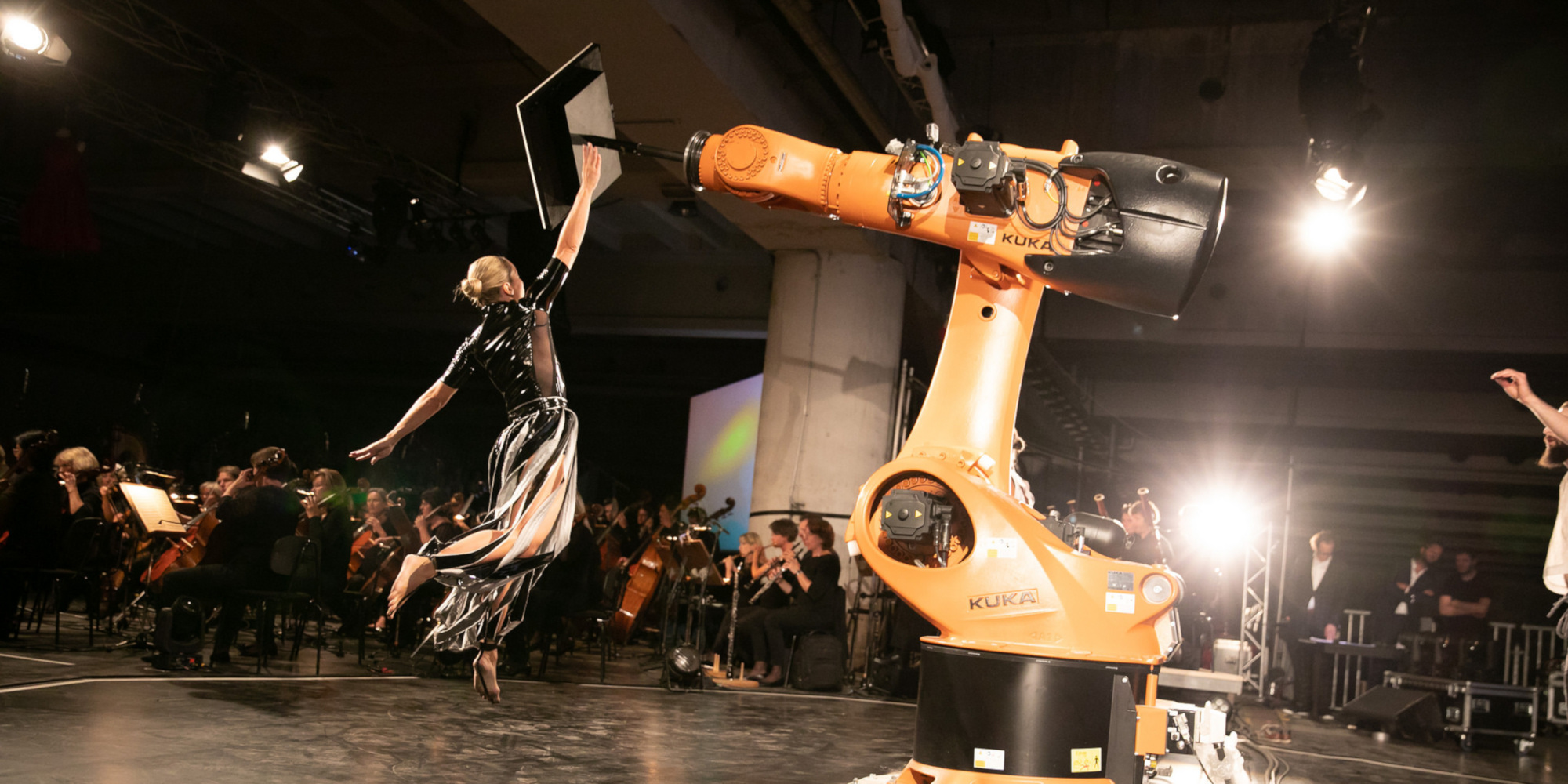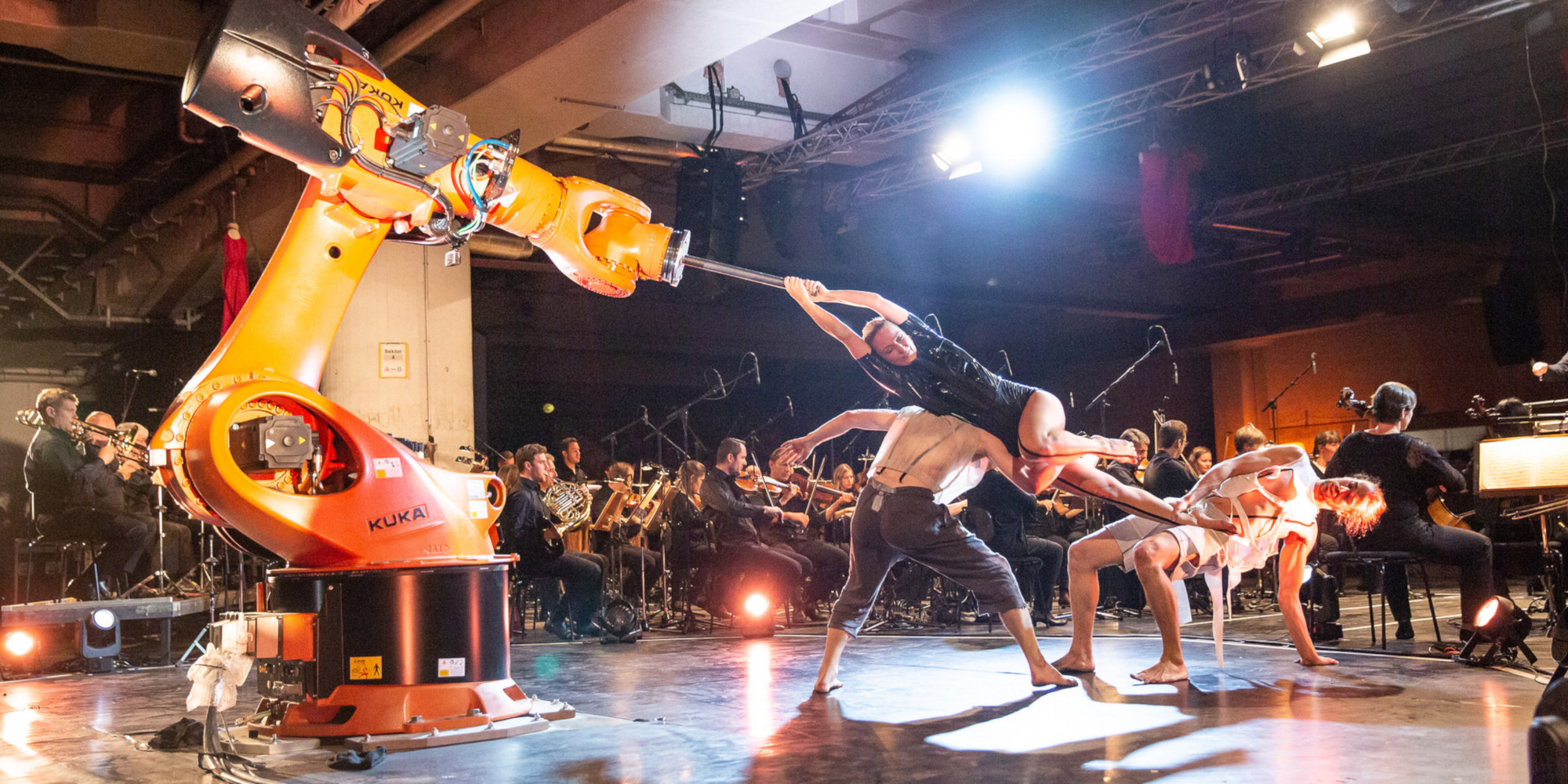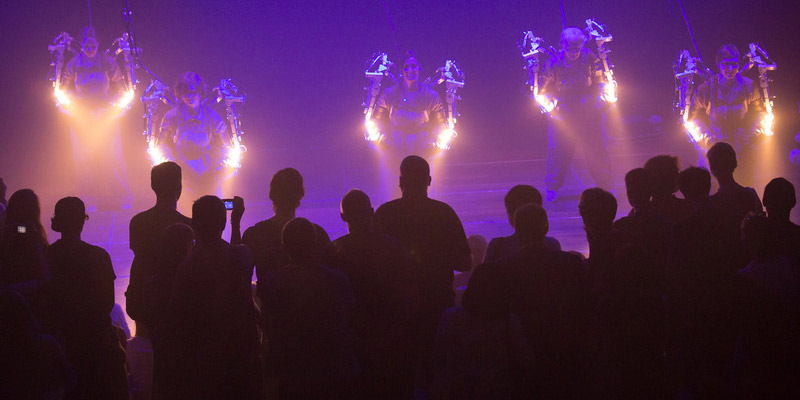The event is part of the Big Concert Night. More information...
For Markus Poschner it is the second time that he, as chief conductor of the Bruckner Orchestra Linz, switches the concert hall for the Gleishalle of the POSTCITY – this extraordinary project is also the opening evening of the international Bruckner Festival. Poschner has chosen the Symphonie fantastique from Hector Berlioz for this “meeting of tradition and modernity”. A work that is almost 200 years old and thus connects a time in which the industrial revolution had only just begun with today’s epicenter of the Digital Revolution. This link also provides the narrative for the production: Evolution, the development of form from a materia prima, from which our world emerges, where humans enter and begin to develop tools and technologies to make our environment arable, but also put the ecosystems of our planet and ourselves in danger.
Poschner and the Ars Electronica team have also brought dancer and choreographer Silke Grabinger, creative robotics expert Johannes Braumann and artist Ursula Neugebauer – with her installation “tour en l’air” – on board. In addition to the human protagonists – orchestra, conductor and dancers – machines and digital projections will also play central roles in the production. Apparently the most impressive machine is the huge Kuka KR 600 industrial robot with a weight of approx. 2.5 tons and an extended height of 3.5 m, which is set up in the middle of the orchestra. The robot can be controlled directly by the music via its own program interface. It can also be synchronized with the digital real-time visualizations on the three panorama projections distributed throughout the room. Aesthetically, the most effective “machines” will be Ursula Neugebauer’s motorized red dresses, whose movements can be controlled from the conductor’s desk. A threatening atmosphere will arise when a “band” of five vibratory tampers play a match with the strong percussion group of the orchestra. Poschner already proved his great virtuosity in incorporating such elements into the performance without damaging the music last year, with Bruckner’s 8th Symphony as the main act of the Big Concert Night. He is not interested in spectacular action, but in making the mysticism of the music, the atmosphere, ritual and mystery outside the usual concert hall atmosphere effectively palpable.

Credits
Hector Berlioz “Episode de la vie d’un artiste”
Symphonie fantastique en cinq parties, op. 14 (1830)
Bruckner Orchestra Linz (AT) conducted by Markus Poschner (DE)
Dancers: SILK Fluegge with Silke Grabinger (AT),
Gergely Dudás (HU), Elias Choi Buttinger (AT)
Special Effects: Tour en l´air by Ursula Neugebauer,
KR 600 Industrial robot / KUKA GmbH, AS50e Battery Rammer /
Wacker Neuson
Robot choreography and programming: Johannes Braumann
(AT), Peter Freudling (AT), Silke Grabinger (AT), Cori O´Lan (AT)
Visualization by Cori O´Lan (AT)
Hector Berlioz (1803–1869)
Épisode de la vie d’un artiste
Symphonie fantastique en cinq parties, op. 14 (1830)
“Fantastical Symphony: An Episode in the Life of an Artist, in Five Parts” is a milestone in the history of music — actually the founding manifesto of Romantic program music, a work followed by countless compositions that strove to achieve a purely instrumental “sonification” of literary works or historical events. Bruckner might possibly have been introduced to Épisode de la vie d’un artiste and Berlioz’s approach to instrumentation by Otto Kitzler (1834—1915), then music director at a Linz theater from whom Bruckner received instruction in musical instrumentation & forms from 1861 to 1863, though certainly by Ignaz Dorn (1829/30—1872), with whom Bruckner continued his studies after Kitzler took leave of Linz. Both teachers thus functioned as mediators of musical “progress,” so to speak, and can be said to have contributed to Bruckner’s recurring expressions of admiration for the Frenchman’s artistic way with orchestration and counterpoint, and extraordinary praise for his works.
Contemporary critics repeatedly called attention to the influence that Berlioz exerted on Bruckner, especially on his 1st Symphony, which was composed in Linz in 1865 and 1866. Following the symphonic premiere of the Te Deum on January 10, 1886, the epithet “The German Berlioz” was even bestowed on Bruckner.
Mag. Jan David Schmitz
Head of Programme, Dramaturgy, and staged Projects


